Tag Archives: National Marine Fisheries Service
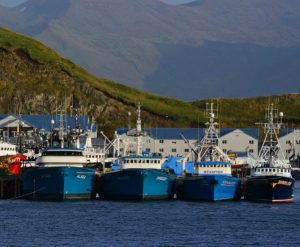
Government shutdown, if it continues, could cost Alaska’s lucrative Bering Sea fisheries
Even if the shutdown does persist, the federal government will allow the Bering Sea fisheries to start as scheduled, with an initial opening for cod Jan. 1, and a second opening for pollock and other species Jan. 20. But the fisheries are heavily regulated, and before boats can start fishing, the federal government requires inspections of things like scales — for weighing fish — and monitoring equipment that tracks the number and types of fish being caught. And the National Marine Fisheries Service, which regulates the Bering Sea fisheries, isn’t doing those inspections during the shutdown. >click to read<20:16
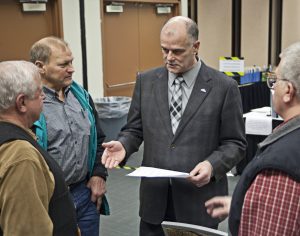
Work continues on federal plan for Cook Inlet salmon
More than two years after a court ruling ordered the North Pacific Fishery Management Council to develop a management plan for the Cook Inlet salmon fishery, a stakeholder group has made a first set of recommendations. The council convened a Cook Inlet Salmon Committee last year composed of five stakeholders to meet and offer recommendations before the council officially amends the Fishery Management Plan, or FMP, for the drift gillnet salmon fishery in Upper Cook Inlet, which occurs partially in federal waters. >click to read<15:13
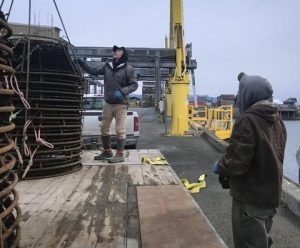
Alaska Fishermen Hauling A Bigger Catch With Gear They Get To Use For The First Time
Longtime Alaska fisherman Bill Harrington has a few choices words about killer whales. “As far as I’m concerned, they’re only thieves in tuxedos,” Harrington says. He’s retired now, but a video from a decade ago shows him pulling in his line as he curses out a pod of killer whales swarming his boat. His catch is exposed; he is not happy. A sperm whale bursts out of the water and Harrington tells them what he really thinks. He knows even just a couple of killer whales could pick his line clean. But now fishermen are taking advantage of new regulations that let them fish with a previously banned piece of gear. Longline pots >click to read<10:20
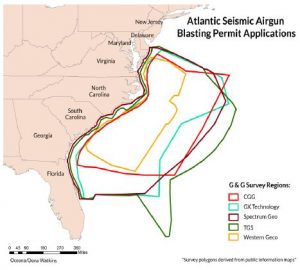
Offshore oil exploration: Can the average citizen make a difference?
To the average American it often seems that our elected leaders, once they get to Washington, D.C., can become somewhat hard-of-hearing to the wants and desires of the voters who sent them there. Such is the case with the recent approval of a permitting process by the National Marine Fisheries Service, which will allow seismic airgun exploration in the Atlantic Ocean off the East Coast of the United States – an activity, experts say, that is extremely hazardous for whales, dolphins, turtles, and other sea creatures. Hundreds of municipalities have already expressed formal opposition to both airgun exploration and offshore drilling, as have hundreds of state and local legislators. >click to read<13:43
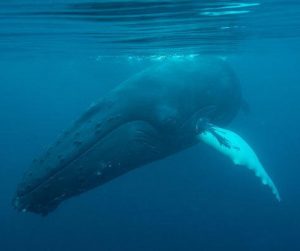
Whale entanglements exceeded average in 2017, report says
The number of large whales entangled in U.S. waters was a little worse than usual in 2017, but entanglements of right whales and in the Northeast were down. In a report released Thursday, the National Oceanic and Atmospheric Administration confirmed 76 large whales were found entangled in fishing gear or marine debris in U.S. waters in 2017. Six of the 76 entangled whales were found dead, 45 were presumed to be alive but still entangled, four had freed themselves and 21 were freed by good samaritans or members of the national Large Whale Entanglement Response Network. >click to read<14:35

Oceana’s Challenge to Bycatch Rule Looks Likely to Sink
The D.C. Circuit appeared primed Monday to uphold how the government counts bycatch — a term for various sea life unintentionally swept up in commercial fishing. Led by the nonprofit Oceana, the challengers take issue specifically with procedures by which the National Marine Fisheries Service monitors for bycatch with less intensity than Congress allowed it. The agency came up with a new procedure to cover the Greater Atlantic region three years ago after a plan from 2008 was found to have improperly given the agency “complete discretion” to depart from procedure. >click to read<09:05
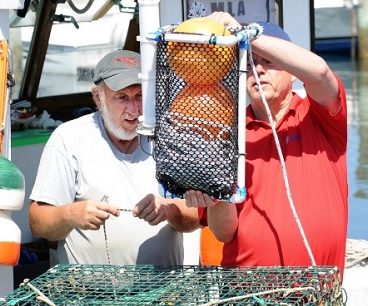
Ropes are latest flashpoint in tug of war over right whales
The lobster industry is willing to consider switching to weaker rope to protect the endangered right whale from deadly entanglements, but whale defenders say that doesn’t go far enough to help a species that can’t bear even one more death. A team of scientists, regulators, animal rights groups and fishermen met this week in Providence to review proposals,,, The team is advising the National Marine Fisheries Service on how to prevent whales from getting entangled in fishing gear as they migrate, feed and mate as they travel back and forth along the East Coast of the United States and Canada. >click to read<11:54

In Battle Over Whale, Judge Tears Up Agency Stonewalling
A federal judge opened the door Thursday for environmentalists to bolster claims over a lobster fishery they blame for the declining population of an endangered whale. Ordering the National Marine Fisheries Service to produce discovery, U.S. District Judge James Boasberg said the Endangered Species Act allows the agency’s challengers to use evidence outside the administrative record. “In order to accurately assess the alleged crisis of these cetaceans, the court will benefit from a record that reflects the actual, ongoing effects of the lobster fishery on the species,” the 16-page ruling says. The cetaceans at issue are called the North Atlantic right whale. There were roughly 455 right whales left as of 2016, and the Conservation Law Foundation says at least 18 of these have been killed since 2017. >click to read<16:28
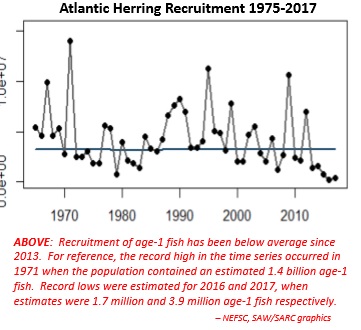
NEFMC Approves Atlantic Herring Amendment 8; Asks NMFS to Set 2019 Catch Limits
On September 25 during its meeting in Plymouth, MA, the New England Fishery Management Council approved Amendment 8 to the Atlantic Herring Fishery Management Plan. The Council also asked the National Marine Fisheries Service (NMFS, NOAA Fisheries) to develop an in-season action to set 2019 specifications for the herring fishery. ABC Control Rule: The acceptable biological catch (ABC) control rule is a formula that will be used to set annual catch limits. The Council considered close to a dozen alternatives that would allow different levels of fishing mortality depending on the estimated level of herring biomass in the ecosystem.,, Potential Localized Depletion and User Conflicts –Buffer Zone, Stock Status and 2019 Catch Limits,,, >click to read<21:34
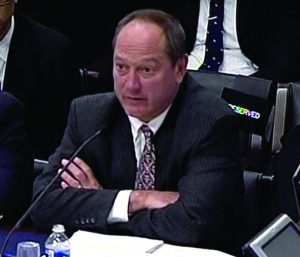
After year in DC, NMFS Chris Oliver reflects on fisheries progress
Chris Oliver has had a busy year since he made the leap from Anchorage to Washington, D.C. to take the lead job at the National Marine Fisheries Service. As soon as he arrived, there was an annual priorities document to review,,, The document is both internally-facing and public to help guide NMFS’ decisions. There were three goals listed in that document, the first of which was to ensure the sustainability of fisheries and fishing communities. He changed it to read “maximize fishing opportunities while ensuring the sustainability of fisheries and fishing communities.” “There are a number of fisheries around the country where we’re not fully utilizing the available harvest whether it’s choke species or bycatch constraints or outdated regulations,” >click to read<09:00
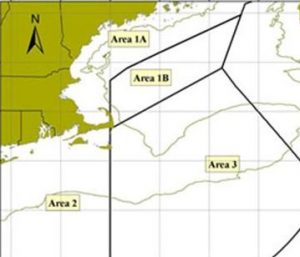
NOAA/NMFS – Reducing the Sub-Annual Catch Limits for Atlantic Herring Management Areas 1A, 1B, 2, and 3
These reductions go into effect today (August 22, 2018), and are based on the most recent stock assessment, which shows that the herring stock is in decline due to historic lows in recruitment over the past five years. To prevent overfishing in 2018, the new Management Area sub-ACLs are as follows: >click to read<16:33
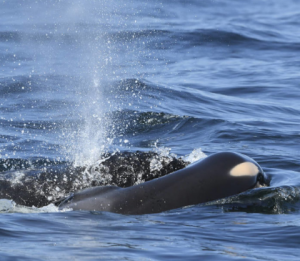
Center for Biological Diversity sues Trump administration to expand protected Southern Resident orca habitat along West Coast
The Tucson, Arizona-based Center for Biological Diversity said as it filed the lawsuit in U.S. District Court in Seattle.,,The lawsuit says the National Marine Fisheries Service has failed to act on the center’s 2014 petition to expand habitat protections to the orcas’ foraging and migration areas off the coasts of Washington, Oregon and California — even though the agency agreed in 2015 that such a move was necessary. The center says the protections would help reduce water pollution and restrict vessel traffic that can interfere with the animals.“ click to read<16:36
NEFMC Seeks Input From Fishermen and Research Partners on RSA Programs; Take the Online Survey!
The New England Fishery Management Council is asking fishermen and their cooperative research partners who participate in the Atlantic Sea Scallop, Atlantic Herring, and/or Monkfish Research Set-Aside (RSA) Programs to take an online survey and provide feedback on the strengths and weaknesses of these programs and pass along any suggestions for improvement. Other stakeholders who have an interest or role in RSA programs also are encouraged to take the survey.,,, The survey, which contains roughly 40 questions, will be available online until mid-September 2018. >click to read<17:02

A profound threat to our fisheries, the ocean habitat, and our way of life. Please read and sign this important petition
Dear Secretary Zinke: We participate, either directly or indirectly, in a wide range of commercial fisheries in the New York-New Jersey Bight. The Bight is the geographic indentation along the Atlantic Coast extending northeasterly from Southern New Jersey to the eastern tip of Long Island. We write to express our concern and opposition to the proposed wind energy lease areas the Bureau of Ocean Energy Management (BOEM) has put out for “Call” in the New York-New Jersey Bight. We have appreciated your outreach to our industry over the past year, and hope we can continue a constructive dialogue. At the same time, we want to make sure you understand that the risks to our industry from poorly-planned offshore wind energy development are immense. If you were to draw a bulls-eye where our historic Mid-Atlantic fishing grounds are on a map, the bulls-eye would include the Hudson North and Hudson South Areas identified by the State of New York, and the Fairways North and Fairways South areas that BOEM unilaterally and subsequently added to the Call. This is a profound threat to our fisheries, the ocean habitat more generally, and our way of life. >click here to read and sign the petition<12:33
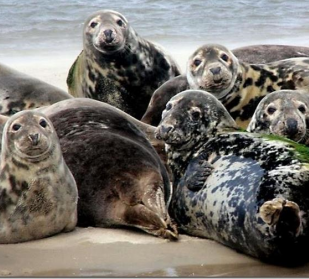
Seals were once nearly wiped out from the Gulf of Maine.
At any given time, approximately 600 seals splash, bathe and feed around a modest mass of rocks six miles off the coast of Maine, the northernmost of the Isles of Shoals. These seals, both gray and harbor species, have made a resurgence in local waters over the last two decades following the imperative enaction of federal protections. Prior to the 1970s, the species had essentially been extirpated in Maine and Massachusetts, after being hunted for their pelts, and killed as competition for fish, said Jennifer Seavey, executive director of Shoals Marine Laboratory on Appledore Island, a joint program between the University of New Hampshire and Cornell University. >click to read<09:38
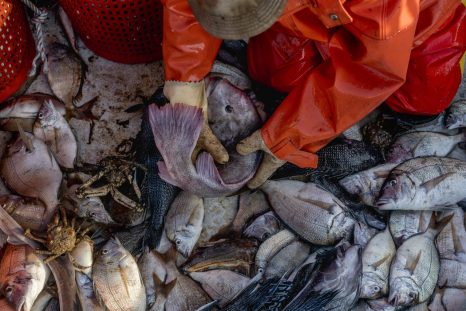
Blue Moon Fish – New York Couple Happy as Clams Selling Fish Direct to the Public
Alex and Stephanie Villani enjoy an enviable life. They live in a beautiful, secluded home with a big pool on Long Island’s idyllic North Fork. They set their own work hours and answer to no one. They spend two months every winter in the Florida Keys. And how do they pull it off? They fish for a living. Literally. Their income derives from their daily catch in the Long Island Sound, which they sell at farmers markets in Brooklyn and Manhattan. Unlike most local fishing operations that eke out a meager living selling their catch to wholesalers, the Villanis sell direct to the public—and command a lot more for their fish. >click to read<14:09
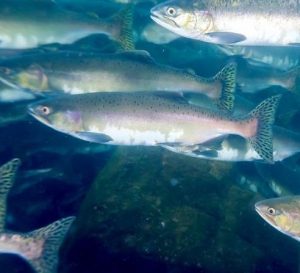
Years later, Alaska receives $56 million for salmon fishery disaster
Almost two years after Gov. Bill Walker requested federal funding to counterbalance a devastating blow to Alaska salmon, the government answered, to the tune of over $56 million in disaster relief money. As to who will actually be on the receiving end of that money, however, is not yet known. That disaster was the 2016 Southest Alaska Pink Salmon Fishery, which came under average of more than 4 million salmon, racking up losses of an estimated threshold of 35 to 80 percent.,,, The National Oceanic and Atmospheric Administration, which oversees the National Marine Fisheries Service, couldn’t immediately say who would be getting funds allocated. >click to read<08:25
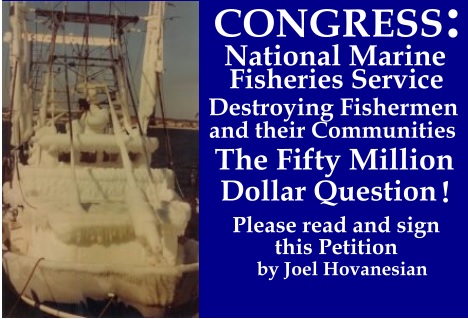
Congress : National Marine Fisheries Service, Destroying Fishermen and their Communities, The fifty million dollar question.
6/14/2018 – Please read, and sign the Petition By Joel Hovanesian, Thank you. Fisheries observers work aboard commercial fishing vessels during fishing trips. They collect information on catch, both kept and discarded, as well as biological data and information on gear and fishing operations over a range of commercial fisheries. These data are used extensively by researchers and fishery managers to better understand the condition of fishery stocks, fishing businesses, and fishing operations. These are NOAA’s words. The reality of the situation is far different. While many fishing businesses have been destroyed by the policies of the National Marine Fisheries Service and many more just hanging on we need to look at the reality of what is truly going on and questions need to be asked. >click to read and sign the petition< 21:00
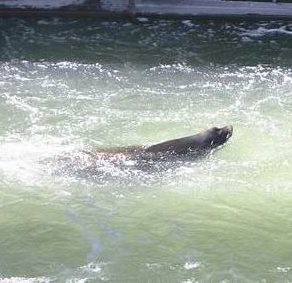
Sea lions continue to eat endangered fish
All the time, money and sacrifice to improve salmon and steelhead passage in the Willamette River won’t mean a thing unless wildlife managers can get rid of sea lions feasting on the fish at Willamette Falls. That was the message Tuesday from Shaun Clements, senior policy adviser for the Oregon Department of Fish and Wildlife, who met at the falls with Liz Hamilton, executive director of the Northwest Sportfishing Industry Association, and Suzanne Kunse, district director for U.S. Rep. Kurt Schrader, D-Ore. >click to read<17:51
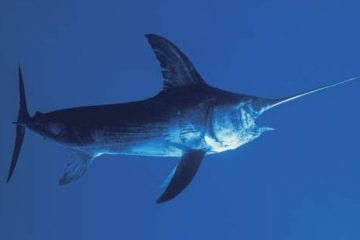
Hawaii’s commercial swordfish fleet shut down for rest of year
Hawaii’s commercial swordfish fleet has been shut down for the rest of the year following a court order aimed at protecting endangered loggerhead sea turtles. The National Marine Fisheries Service closed the Hawaii shallow-set longline fishery in a move heralded Wednesday by conservation groups that sued for the turtle protections. Under the court order the swordfish fishery will close, and a new biological assessment will determine what the limit will be next year. “It’s a good result for all parties,” said Jim Cook, board member with the Hawaii Longline Association. >click to read<10:51
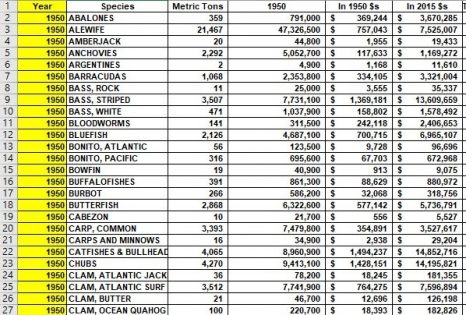
Commercial Fishing in the U.S. Exclusive Economic Zone – What was being caught and where back to 1950
What is the status of commercial fishing in the U.S. Exclusive Economic Zone, the waters from 3 to 200 miles off our coastline? Generally speaking – something that the “bureaucrats in charge” have developed a great deal of facility in doing – it’s pretty good. Since the National Marine Fisheries Service started getting serious about tracking commercial landings (or at making those landings readily accessible) in 1950, the total weight of our domestic landings has increased from 4.9 billion to 9.8 billion pounds. The value of those landings, when corrected for inflation, has increased from $3.3 billion to $5.2 billion, almost as good. Nils E. Stolpe/FishNet USA >click to read<17:03
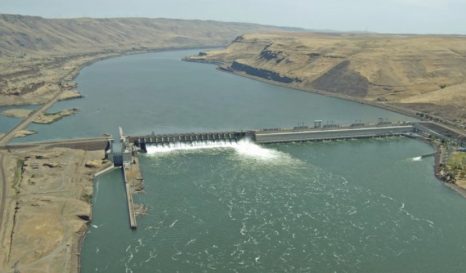
Appellate court orders more water over Columbia, Snake dams to aid fish
More water will flow over several federally operated Northwest dams beginning Tuesday, a day after conservationists and the state of Oregon won a court victory in the long-running battle over the plight of salmon and steelhead in the region. A panel of judges at the U.S. Court of Appeals for the Ninth Circuit affirmed a district court order to protect juvenile fish migrating downstream on the Columbia and Snake rivers by increasing spill at eight dams. This fight has been going on since 2000, when the National Wildlife Federation challenged the National Marine,,, >click to read<13:04
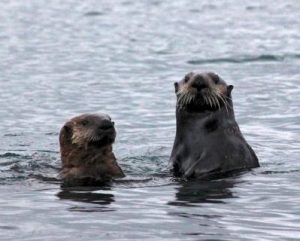
Alaska Senate passes Stedman’s sea otter resolution
The Alaska Senate passed a resolution Wednesday calling on the federal government to take steps to increase the harvest of sea otters in Southeast Alaska. Senate Joint Resolution 13 is sponsored by Sitka Republican senator Bert Stedman. It asks the federal government to transfer management responsibility to the state government or National Marine Fisheries Service, instead of the U.S. Fish and Wildlife Service. It also urges federal agencies to work with the state and other interest groups to produce a management plan for otters, recognizing their impact on crab, clams, urchins and other sea creatures. >click to read<11:07
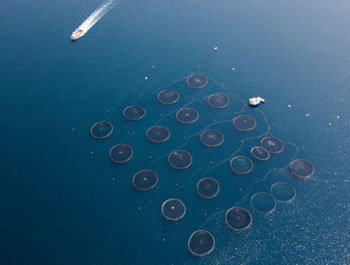
NOAA, NGOs debate effects of ocean farms on wildlife, Litigation may be deterring investors
Federal waters in the Gulf of Mexico have been open to fish farming for two years, but no farms yet exist. In January 2016, the National Oceanic and Atmospheric Administration’s National Marine Fisheries Service issued a rule that would let companies apply for 10-year permits to farm fish in federal waters of the Gulf, with five-year renewals thereafter.,, Paul W. Zajicek, executive director of the National Aquaculture Association, suspects companies interested in starting offshore farms are waiting for results of a federal lawsuit against the fisheries service.,, Those behind the lawsuit say NOAA’s fisheries service is trying to regulate aquaculture as fishing but lacks authority to expand into aquaculture. >click to read<21:43
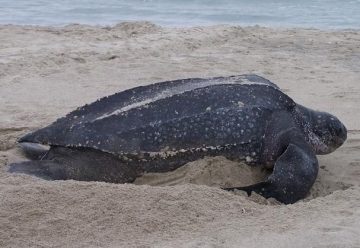
Petition to Reclassify: Fight begins over fate of leatherback sea turtle
Protected as endangered species for nearly half a century, their Atlantic population soon may lose that status, in what is becoming a fight between commercial fishermen and conservationists. The Blue Water Fishermen’s Association, which represents longline fishermen who catch swordfish, tuna and other big fish along the east coast, has petitioned the federal government to reclassify from endangered to threatened the northwest Atlantic population of leatherbacks,,, With the Pacific leatherback population crashing, they say the northwest Atlantic population should be classified separately so U.S. fishermen aren’t penalized for the failure of other countries to protect them. >click to read<09:36

Lawsuit Challenges Trump Administration’s Failure to Protect Pacific Humpback Whales Threatened by Fishing Gear, Ship Strikes, Oil Spills
The Center for Biological Diversity, Turtle Island Restoration Network and Wishtoyo Foundation today sued the Trump administration for failing to protect humpback whale habitat in the Pacific Ocean, where the animals face threats from fisheries, ship strikes and oil spills. Today’s lawsuit, filed in federal district court in San Francisco, aims to force the National Marine Fisheries Service to follow the Endangered Species Act’s requirement to designate critical habitat within one year of listing a species as threatened or endangered and not authorize actions that,,, >click to read< 16:12
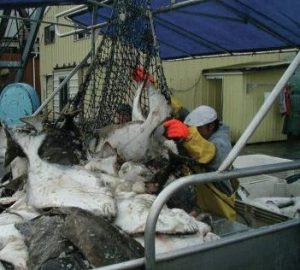
Halibut fishery poised to open as NMFS works on 2018 catch limits
Alaska’s halibut fishery is set to open this month, but the final quota was still not completely set as of March 14, even as fishermen began to receive permits in the mail. Indications, however, are that the quota will decrease this year compared to last. Under regulations published by the National Marine Fisheries Service this month, the fishery will open March 24 and run through Nov. 7. But the total catch limits remain unknown. That’s because this year, for just the second time in the commission’s history that dates to its creation by a 1923 treaty, the International Pacific Halibut Commission could not come to an agreement about the 2018 catch limits at its annual meeting. >click to read<12:36






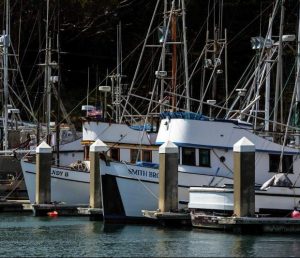
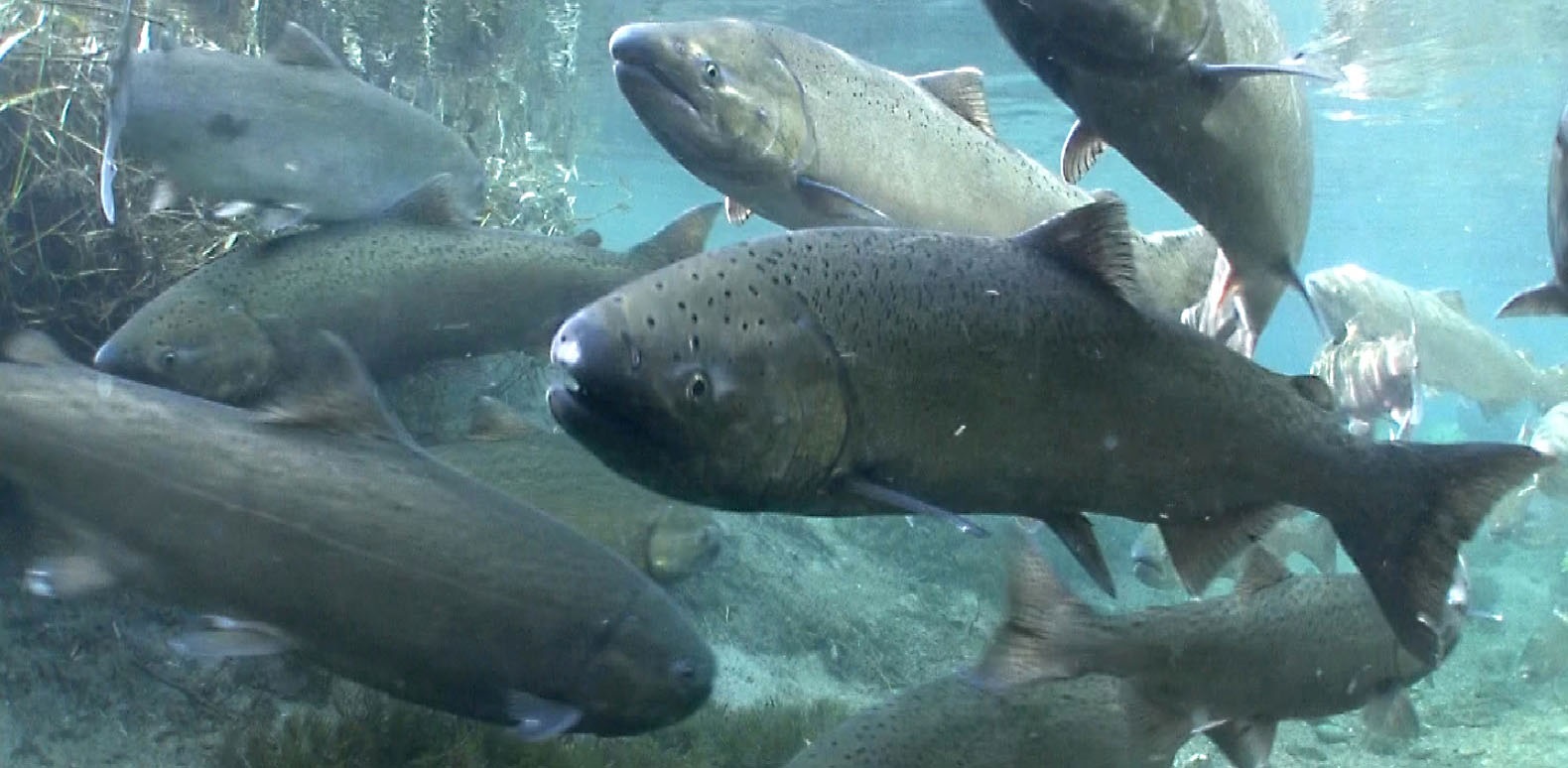



























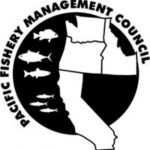


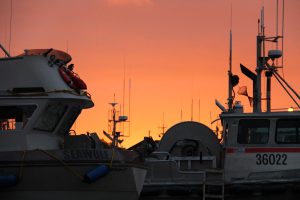

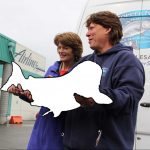
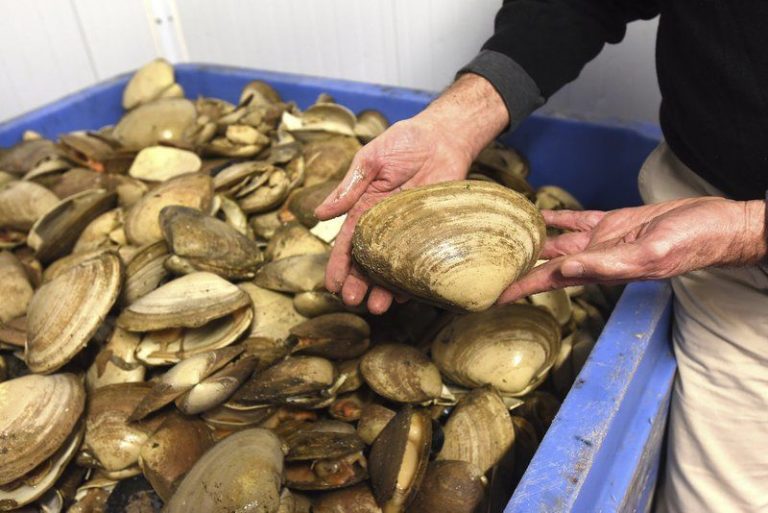
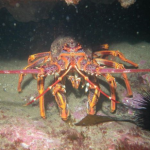




Governor Cuomo And Attorney General Underwood Demand Changes To Unfair Federal Fishing Quotas
Governor Andrew M. Cuomo and Attorney General Barbara D. Underwood today submitted comments to U.S. Commerce Secretary Wilbur Ross and demanded that the U.S. Department of Commerce, National Oceanic and Atmospheric Administration, National Marine Fisheries Service, and Mid-Atlantic Fishery Management Council repeal and replace the unfair state-by-state allocation of the annual commercial quota for summer flounder, also known as fluke. The need for equitable distribution of fluke is critically important to New York’s fishing industry and the state’s overall ocean economy. >click to read<17:27
Share this post